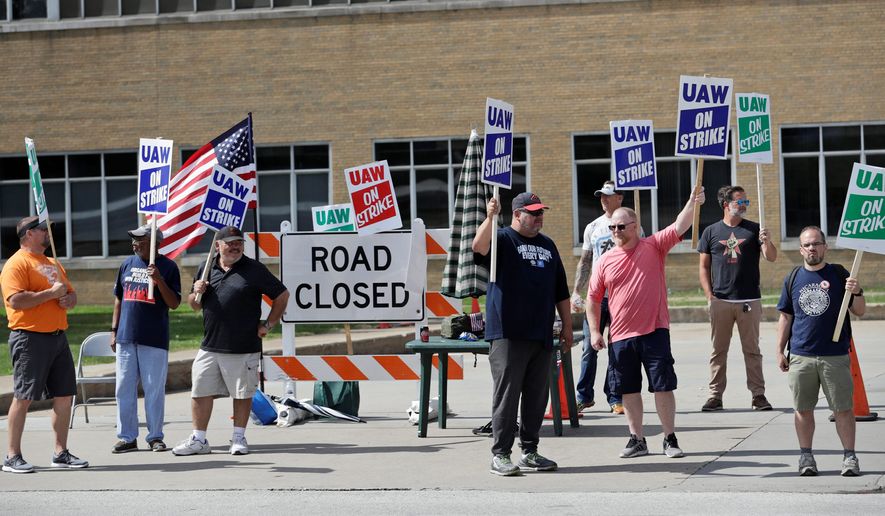The United Auto Workers’ longest nationwide strike since 1970 entered its second week as negotiations with General Motors restarted Monday.
Negotiators for the UAW and GM met Monday after a weekend of talks had stalled over a new four-year contract between workers and the country’s largest automaker.
Meanwhile, picketing workers began receiving $250 per week in strike pay, as opposed to their normal GM wages that ended last week.
About 49,000 UAW members walked off their jobs at GM on Sept. 16, freezing production at more than 30 manufacturing sites in nine states.
Wall Street continued to show worries with GM stock closing Monday at $37.24, down about 5% since the strike started. The strike reportedly is costing GM between $50 million and $100 million a day.
The strike also has garnered the political spotlight.
President Trump has encouraged GM to make a deal quickly, while Democratic presidential candidates, including former Vice President Joseph R. Biden and Sen. Elizabeth Warren, have visited strikers to show allegiance to their labor disruption.
While both sides have been tight-lipped over details of the negotiations, a person briefed on the talks identified major sticking points that include wages and profit-sharing, new products for factories that GM wants to close, a faster route to full wages for new hires and the company’s use of temporary workers.
In Lordstown, Ohio, where GM is closing a more than 50-year-old small-car assembly plant, the company has offered to instead locate a battery factory.
The factory would be run by a joint venture, and although it would have UAW workers, GM is proposing they work for pay that’s lower than what the company pays at assembly plants.
On Monday outside the Lordstown plant, strike leaders struck a positive tone.
“It is going well. Our people are frustrated with GM and we want them to know we are here,” Bill Adams, vice president of the UAW Local 1112, told The Washington Times.
Mr. Adams, said about 500 UAW members are picketing voluntarily in multiple shifts to cover all 24 hours of the day. The union hall, he added, is functioning as a hub for donations, food and organizing activities.
UAW representatives also are pushing for a larger slice of the more than $30 billion in profits GM has made over the past five years. GM has countered that it sees a global auto sales decline ahead and wants to bring its labor costs in line with U.S. plants owned by foreign automakers.
Experts have noted that the strike comes at an interesting time for the American labor movement.
David Zonderman, a professor of U.S. labor history at North Carolina State University, said that union membership is at an all-time low nationally — but positive feelings about organizing are at a high.
A Gallup survey last month found that 64% of Americans approve of unions, up 16% from 2009.
Gallup, which has tracked public opinions of unions since the 1930s, added that since 1967, positive sentiments on unions have “only occasionally surpassed 60%” with the current rate one of the highest it has recorded over the past 50 years.
“Is this the rebirth of labor? Well, sometimes there is a real disconnect between unions and their ability to contribute to the growth of the middle class. People are discussing this again,” Mr. Zonderman told The Times.
Mr. Zonderman did note that recent Bureau of Labor Statistics figures show private-sector union membership to be under 7%, the lowest level since the Great Depression.
• This article is based in part on wire service reports.
• Dan Boylan can be reached at dboylan@washingtontimes.com.




Please read our comment policy before commenting.